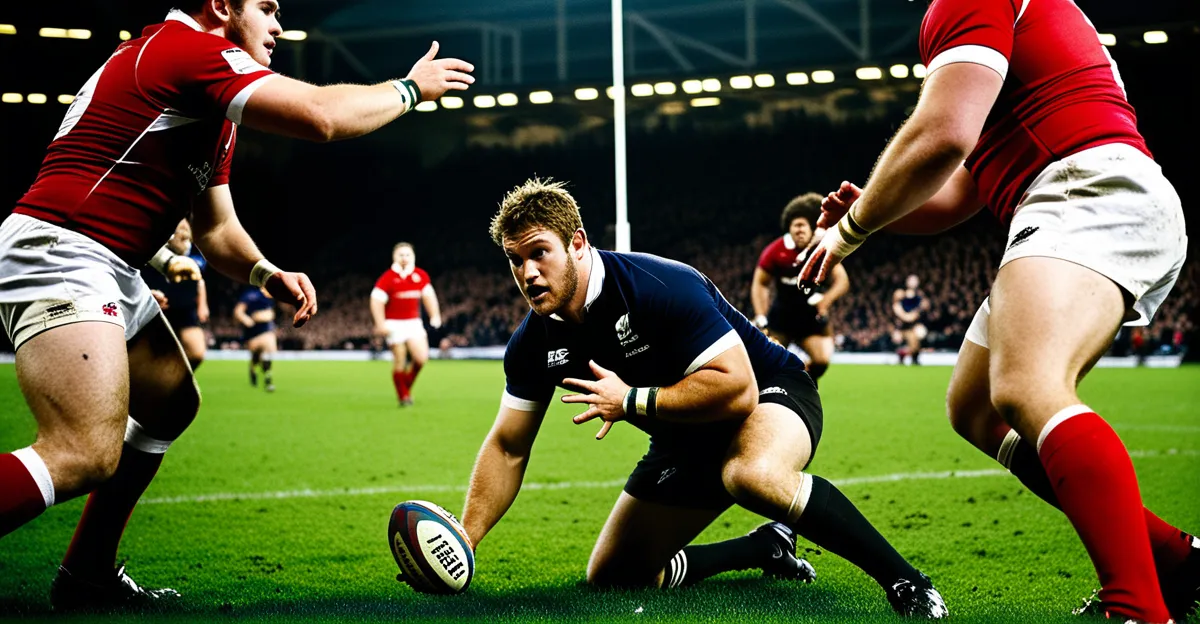Key Trends Driving Rugby Union’s Rise in Popularity
Recent rugby statistics reveal a significant surge in both viewership and participation across the UK sports scene. Ticket sales for major rugby union matches have consistently increased, reflecting a broader interest that extends beyond traditional fan bases. This rise ties directly to heightened TV audiences, where televised games attract millions, and digital engagement metrics show growing interaction on social media platforms. These trends underscore rugby union’s expanding footprint among diverse demographics.
The demographic profile of players and fans has shifted noticeably. Younger audiences are gravitating towards rugby union, attracted by the sport’s evolving style and community-oriented values. Furthermore, there is a marked increase in female participation and viewership, signaling a break from the historically male-dominated rugby culture. Urban areas report more interest in rugby union, contrasting with the sport’s traditional strongholds in rural regions.
Additional reading : Exploration of the Most Iconic Players in UK Sports History: Who Changed the Game Forever?
In analyzing this data, it is clear that rugby union popularity is not only growing but also diversifying, reinforcing its status in the competitive UK sports trends landscape. The combination of increased access, media coverage, and demographic changes creates a dynamic environment fueling rugby union’s ongoing rise.
Key Trends Driving Rugby Union’s Rise in Popularity
Recent rugby union popularity growth in the UK is reflected in impressive statistics across viewership and participation. Viewership figures consistently show increased TV audiences, with major games drawing record crowds both in stadiums and on screens. Ticket sales are climbing steadily, indicating deeper fan engagement and sustained interest. Digital platforms amplify this trend, with fans eagerly following live streaming and social media updates, contributing to rugby’s broader visibility.
In the same genre : How Do UK Sports Influence National Identity and Culture?
Demographically, there has been a notable shift. Younger audiences and more diverse groups are actively engaging with the sport. This demographic change fuels rugby’s expansion beyond traditional fan bases, integrating new age groups and social backgrounds into the fold. Female participation, for example, has seen significant growth, reflecting broader social trends towards inclusivity in sports.
Participation rates at community levels have risen alongside these trends, driven by enhanced grassroots programmes and school initiatives. Together, these factors create a dynamic environment where UK sports trends favor rugby union’s steady ascent. Detailed rugby statistics confirm that rugby’s appeal is evolving from niche to mainstream, supported by both loyal fans and newcomers. This balance positions rugby union well for continued growth in the UK sports landscape.
Media Coverage and Broadcast Impact
The surge in rugby union popularity is closely tied to enhanced rugby media coverage. Expanding the presence of rugby on TV, mainstream broadcasters now air more matches, reaching a wider audience than ever. This increased visibility drives interest and engagement, evidenced by rising UK sports broadcasting ratings for rugby union compared to other sports.
Additionally, digital platforms play a vital role. Social media channels and specialized streaming services engage fans with real-time updates, highlights, and interactive content. These digital outlets complement traditional broadcasts, attracting younger viewers and converting casual watchers into dedicated fans. Streaming partnerships, such as those with popular platforms, have expanded rugby’s reach beyond conventional TV audiences.
This multi-channel approach enhances rugby media coverage by combining the strengths of live broadcasts and digital engagement. It also responds well to changing viewer habits in the UK sports landscape, offering flexible access to games and rugby-related content. As a result, fans experience rugby union through more personalized and accessible channels, further boosting the sport’s visibility and appeal.
Overall, the integration of traditional rugby on TV and innovative digital strategies is a key factor pushing rugby union’s rise in popularity within the competitive UK sports broadcasting environment.
Media Coverage and Broadcast Impact
Expanding rugby media coverage has played a crucial role in boosting rugby union popularity across the UK. The increased number of televised matches on mainstream channels has made the sport more accessible, attracting diverse audiences beyond traditional fans. Broadcast schedules now include prime-time slots for key fixtures, significantly raising TV audiences and improving exposure.
Digital and social media platforms further amplify engagement, creating real-time interaction opportunities for fans. Rugby clubs and broadcasters use social channels to share highlights, behind-the-scenes content, and player interviews, encouraging deeper connections. This trend is reflected in rising online engagement metrics, which complement traditional TV viewership and drive broader conversations around the sport.
Partnerships with streaming services also widen rugby’s reach. These platforms offer flexible viewing options, catering to younger and more mobile audiences who prefer on-demand access. This approach aligns with current UK sports broadcasting trends that emphasize accessibility and convenience, helping rugby union sustain its growing fanbase. Consequently, the combined effect of TV, digital, and streaming media is a dynamic media environment that supports rugby’s rising popularity and its evolving position in the UK sports landscape.
Grassroots Development and Community Investment
Strong investment in rugby grassroots initiatives is a fundamental driver behind rugby union popularity’s rise in the UK. Expanding youth rugby UK programmes have significantly increased participation among children and teens, fostering early engagement and skill development. Local schools and community organisations actively support these initiatives, helping to build sustainable rugby pathways.
Increased funding and national initiatives supplement efforts by rugby clubs England, which have enhanced their coaching quality and facilities. This comprehensive support network ensures young players receive consistent training while promoting rugby’s values of teamwork and discipline. Successful case studies highlight clubs that transformed local interest into competitive youth teams and broader community involvement.
This grassroots momentum addresses both participation and retention challenges, creating a thriving environment for rugby’s future appeal. As children join youth programs, their progression into club rugby strengthens fan bases and deepens local loyalty, feeding directly into the expanding UK sports trends that favor rugby union. The growth at the grassroots level complements professional coverage and media exposure, making community investment an essential pillar of rugby’s increasing popularity in Britain.
Grassroots Development and Community Investment
Investment in rugby grassroots initiatives is a pivotal factor in the sport’s rising popularity across the UK. Youth rugby UK programs have expanded significantly, supported by collaboration among schools, local rugby clubs England-wide, and national governing bodies. These programs focus on making rugby accessible at an early age, nurturing skills and enthusiasm that develop lifelong engagement.
Schools often integrate rugby into their physical education curricula, providing structured environments where young players learn fundamentals under trained coaches. Local clubs play a vital role, offering regular training sessions, competitive matches, and community events that sustain interest beyond the classroom. This community-level support creates a broad base for rugby union popularity to grow sustainably.
A notable example is how grassroots development boosts participation among diverse groups, aligning with broader UK sports trends emphasizing inclusivity and health benefits. These initiatives also address common barriers to entry by supplying equipment, coaching expertise, and safe playing environments.
Detailed rugby statistics verify that areas with active grassroots involvement experience higher youth participation rates and increased attendance at club matches. Consequently, this community investment fosters a strong foundation for rugby’s future growth, linking grassroots enthusiasm directly to the sport’s expanding appeal nationwide.
Key Trends Driving Rugby Union’s Rise in Popularity
Recent rugby statistics demonstrate a clear upward trajectory for rugby union popularity in the UK. Viewership figures highlight a steady rise in both stadium attendance and TV audiences, with many matches achieving record numbers. This growth in ticket sales reflects deeper fan commitment, supported further by increased digital engagement. Social media interactions and live-streaming participation amplify rugby’s accessibility, particularly for younger, tech-savvy demographics.
An important driver behind these metrics is the evolving demographic profile of rugby fans and players. A broader age range now shows interest, with youth participation climbing notably. Female involvement in both playing and spectating has also expanded rapidly, signaling a significant cultural shift within the sport. The sport’s appeal in urban centers is growing alongside traditional rural strongholds, illustrating rugby union’s widening social footprint.
These trends align with broader UK sports trends emphasizing inclusivity and diversified audiences. Consequently, rugby union’s growth is not purely numerical but also qualitative, reflecting a community and cultural resonance that strengthens the sport’s long-term position across Britain.
Key Trends Driving Rugby Union’s Rise in Popularity
Recent rugby statistics demonstrate notable increases in rugby union popularity through various metrics. Ticket sales for major matches have risen substantially, reflecting stronger in-person engagement. Concurrently, television audiences have grown, with UK sports trends showing rugby matches regularly capturing millions of viewers. This expanding viewership is complemented by a surge in digital interaction, where fans participate actively via social media and streaming platforms.
Demographic data reveal shifts in the fan and player bases. Younger generations show heightened interest in rugby union, influenced by the sport’s evolving style and accessibility. Additionally, a growing female audience contributes to this trend, signaling a diversification of rugby culture in the UK. Urban centers, once peripheral, are now hotspots for rugby participation, reflecting broader social shifts in sports preferences.
Together, these factors create a feedback loop: increased visibility boosts participation, which in turn fuels further media coverage. The alignment of grassroots growth, media exposure, and changing demographics underpins rugby union’s rise. In short, rugby union popularity is consolidating across age, gender, and geography, positioning the sport strongly within the competitive UK sports environment.
Key Trends Driving Rugby Union’s Rise in Popularity
Recent rugby statistics clearly illustrate a notable increase in rugby union popularity throughout the UK. Ticket sales for major matches have shown steady growth, often outpacing other sports, indicating a growing fan dedication. This surge in attendance is mirrored by expanding TV audiences, where rugby broadcasts consistently attract millions, supported by an upswing in digital engagement through social media and streaming platforms. Such platforms enable fans to interact in real-time, an essential factor in modern UK sports trends.
Demographically, the sport is diversifying significantly. Younger generations are embracing rugby union not only as spectators but as active participants. Particularly, a rise in female players and supporters marks a departure from rugby’s traditionally male-centric image. Urban centers display increased enthusiasm, complementing well-established rural followings, thus broadening the sport’s appeal across different geographic and social groups.
This demographic evolution and combined growth in physical attendance, broadcast viewership, and online interaction create a robust upward momentum. Consequently, these trends confirm rugby union’s expanding cultural and commercial footprint within the broader context of evolving UK sports trends.





